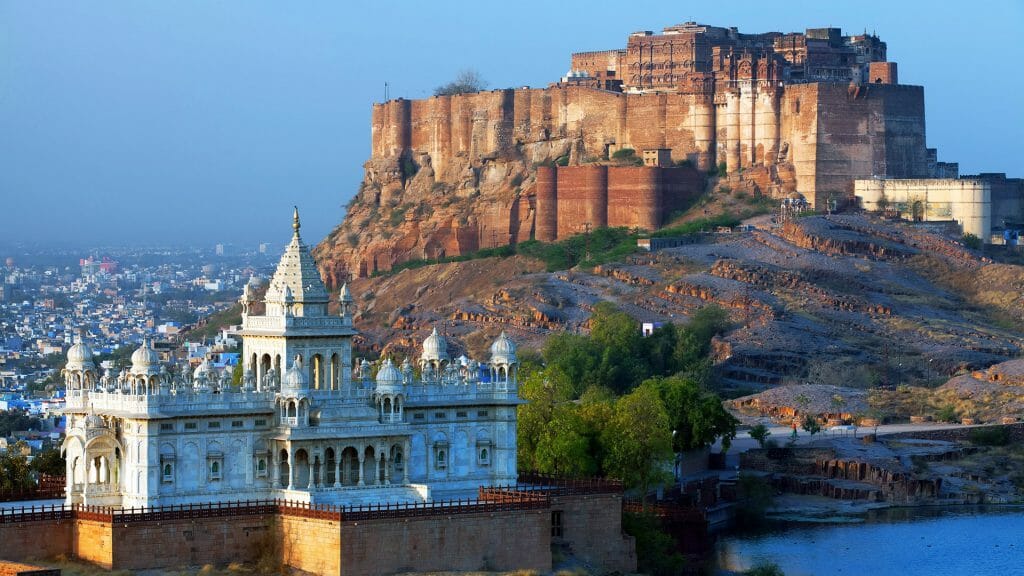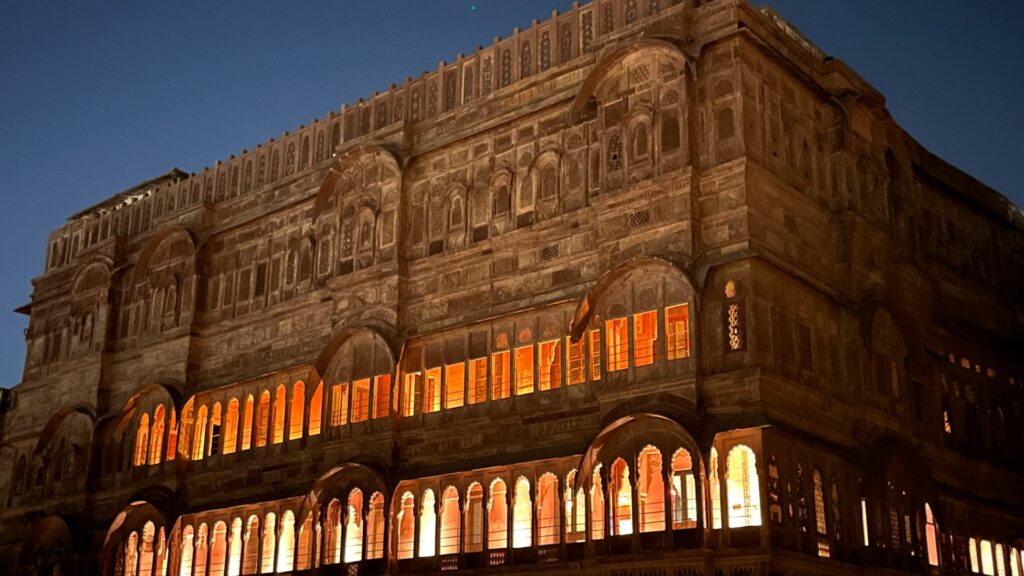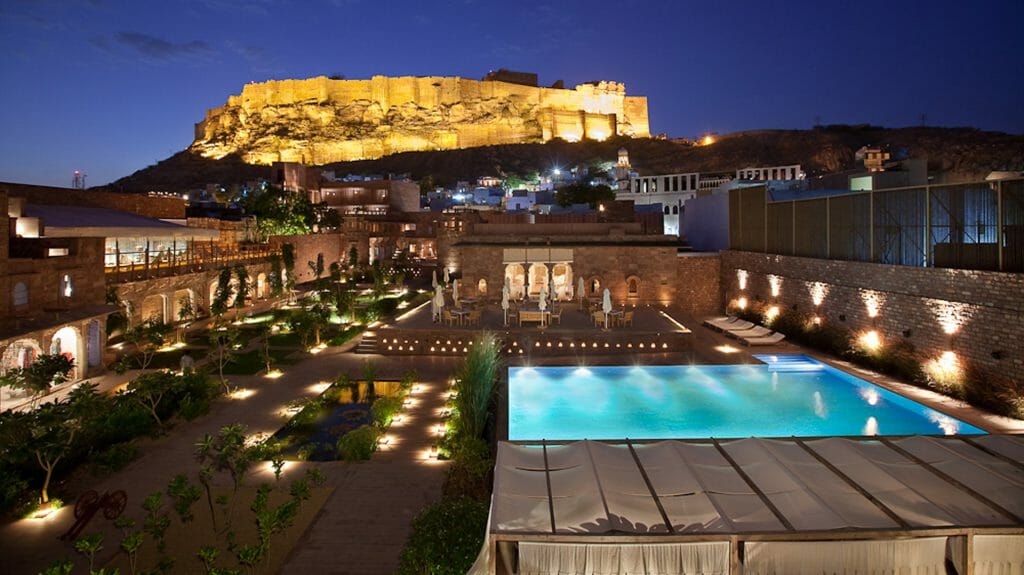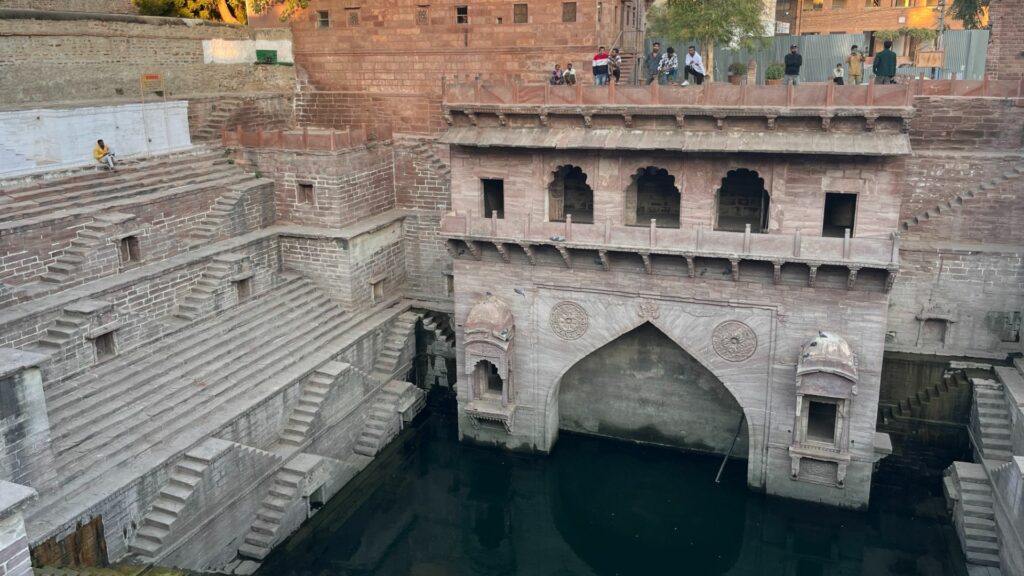Sometimes referred to as the ‘Citadel of the Sun’ or the ‘Blue City’, due to the colour of its blue painted houses, Jodhpur was founded in the 15th century. It is probably best known for its exceptionally well-preserved ancient fort that dominates the city’s skyline.
Mehrangarh Fort stands four hundred feet above the walled city on a perpendicular cliff, and is considered one of the most formidable and magnificent forts of Rajasthan. Rudyard Kipling referred to the fort as “the work of giants.” You cannot help but be impressed by the structure and even more so when you venture inside to learn of its past and present.

The fort has seven gates and several palaces inside its walls, known for their intricate carvings and sprawling courtyards. The fort houses opulent palaces such as the Sheesh Mahal (Glass Palace) and Phool Mahal (Rose Palace). It contains a museum and a series of galleries with the most exquisite paintings, the detail of which takes your breath away. You also see Elephant’s howdahs, Palanquins and an Armoury to name a few.
Should time and budget allow, the best time to visit the Mehrangarh Fort, with its unique and impressive setting, is after 5pm when it closes to the public and the sun is casting the last of its soft orange rays over the city. Joined by the museum curator, take a private tour through the fort that includes personal stories and anecdotes about the various exhibits and collections. Standing on the ramparts overlooking the city is quite the experience.

The highlight of the visit has to be when you enter the Phool Mahal (Rose Palace); a beautifully decorated hall, where Maharajas would come to relax and be entertained by female dancers. The ceiling and walls are covered in intricate golden glass and mirror filigree work. A single musician sits in the corner playing the Indian santoor, an ancient folk instrument thought to have originated in Persia. A trapezoid-shaped hammered dulcimer, the instrument is generally made of walnut and has 25 bridges. Each bridge has 4 strings, making for a total of 100 strings. The strings are played by being struck with two lightweight wooden mallets. While he plays, the lights are turned off and the room becomes lit by simple candlelight. The combination of the environment, atmosphere and music is utterly spellbinding and incredibly moving. It is easy to appreciate the stories of those who believe in the power of Indian classical music to stir, thrill and inspire.
Stay at Raas Jodhpur
Amidst these meandering lanes, in the heart of the old city stands the eighteenth century RAAS Haveli, breathing old world Rajputana charm in its antiquated walls. At the base of the Meherangarh, seamlessly blending with its surroundings yet standing out resplendently, RAAS finds a beautiful amalgamation of classic and contemporary; a haven of heritage, carrying forth the legacy of the Thakurs of RAAS.

Sustainability at Raas Jodhpur
RAAS Jodhpur is extremely invested in the heritage of Jodhpur and their local community. They took on the job of restoring the 18th century Toorji Ka Jhalra stepweel that lies a short distance from the hotel. Each original Jodhpur sandstone slab was removed and cleaned by hand. Today, the stepwell is a popular attraction and has contributed to the area’s tourism economy. The steps are also used a cultural events venue and local women come here to pray during the festival of Gangaur.






